RELIGION
The rhythm set up by the Nile is thought to be the source for Egyptian belief in cycles of life and death, and their deep concern with the soul or ka. It was believed that after a transmigration of several thousand years, the ka would return to human form. So Egyptians learned to mummify their dead. Their close association with nature led people of these ancient days to worship many gods and goddesses – what scholars call a pantheonTheir deities were often part animal and part human. Thus, religion and nature dominated life in ancient Egypt.
|
MYTHOLOGY
There are various accounts of creation in Egyptian mythology. According to one, a primeval ocean – the goddess Nun – gave birth to the creation god Atun or Amun, who then made the rest of the cosmos. He was the mysterious Hidden One who created all the other deities including the great sun god Ra (or Re) and two important gods named Osiris and Isis.The god Osiris, "Beloved Pharaoh and Molder of Civilization," taught people the arts and how to grow orchards.
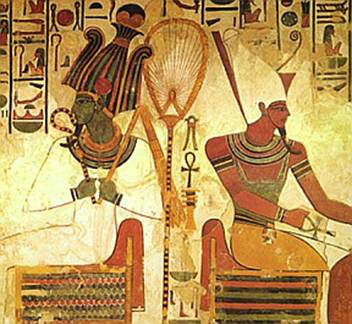
In this tomb painting, Autun is on the left and Osiris on the right. Originally the crook and flail were associated with the work of a shepherd but became symbols of the ruler of Egypt. Isis, wife and sister of Osiris, was the goddess of motherhood and sisterhood. Also patron of nature and magic, she was the bountiful giver of wheat and barley, which were staples of Egyptian life. She is shown in the form of a falcon.
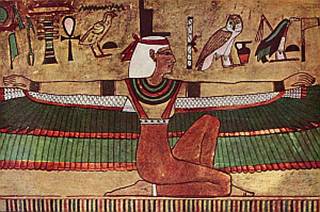
|
|
Other gods and goddesses are represented by an array of human and animals forms. The vulture goddess Nekhbet represents Upper Egypt and the cobra goddess Wadjet, Lower Egypt. After Upper and Lower Egypt wer united, both goddesses appeared on the headpiece of the pharaoh.
|
|
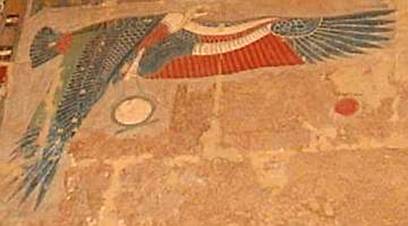
|
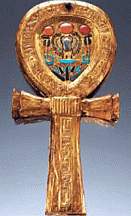
|
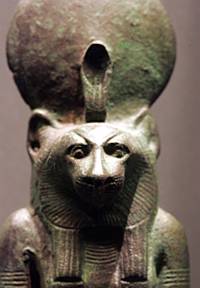
|
|
Vulture goddess Nekhbet
|
Ankh - symbol of eternal life
|
Wadjet as Wadjet-Bast, with a lioness head
|
|
Click on this link for more on Egyptian Symbols and Decorative Motifs
Vocabulary:
- Ankh [angk]
- Guilloche - [gi-lohsh]
- Scarab
- Udjat
- Cartouche [kahr-toosh]
|
return to top | previous page | next page




